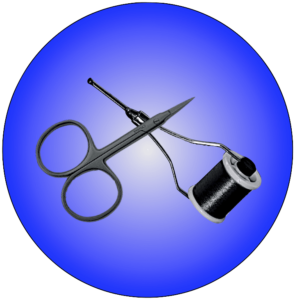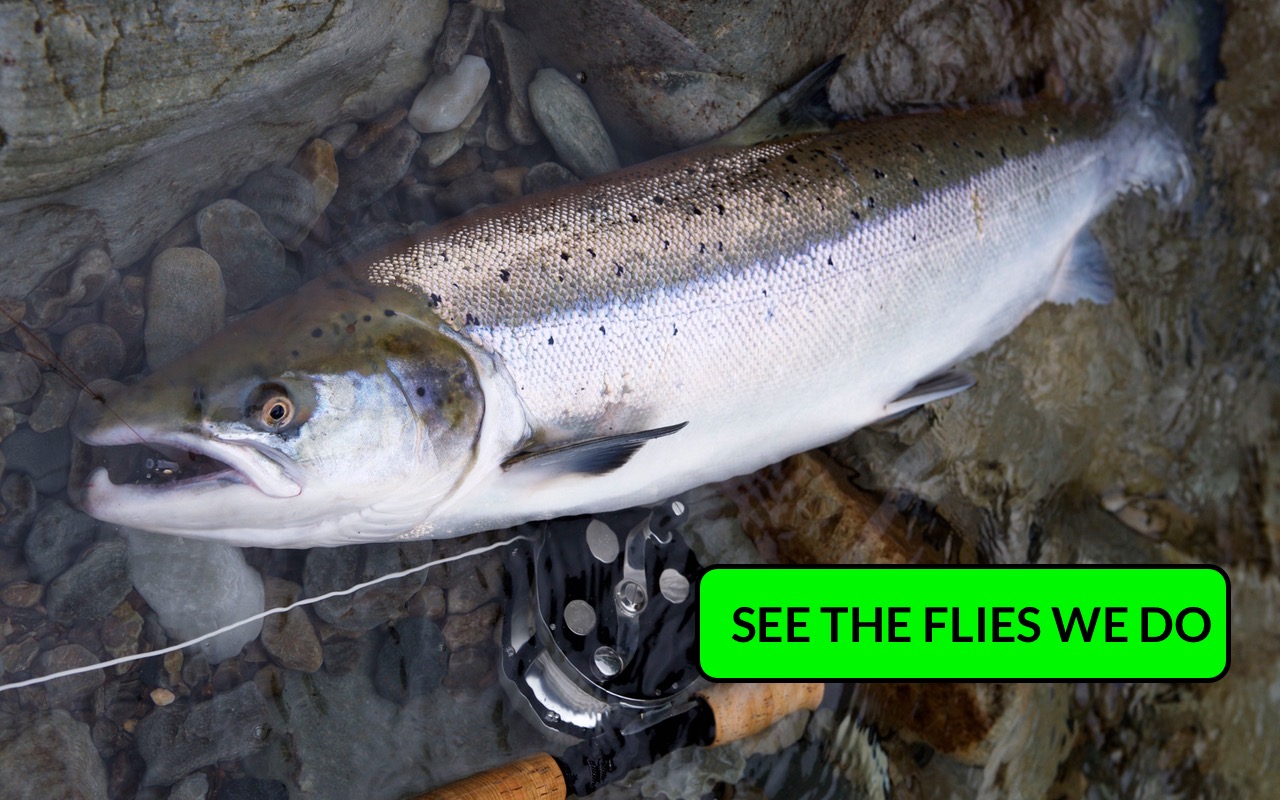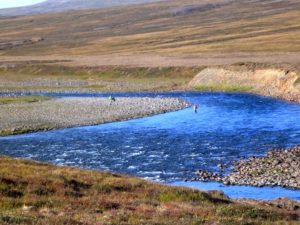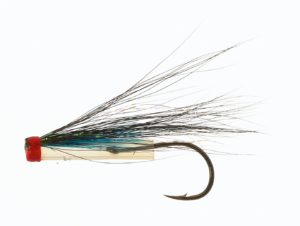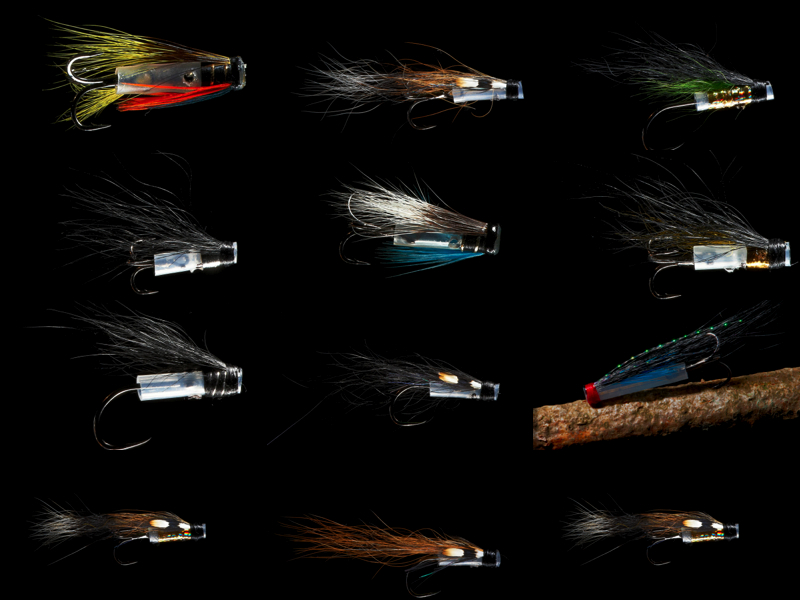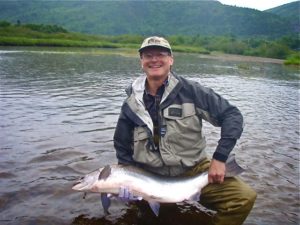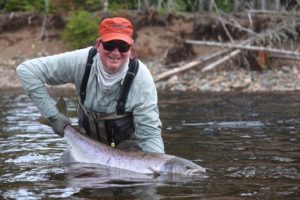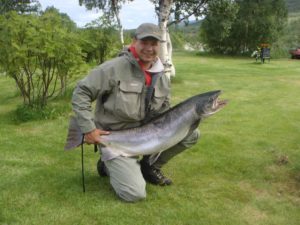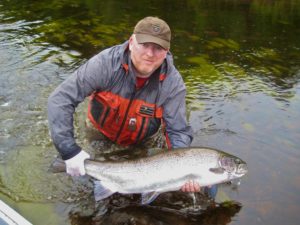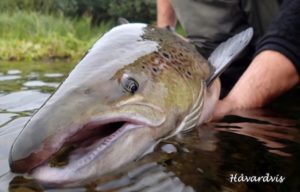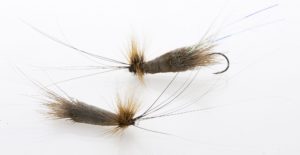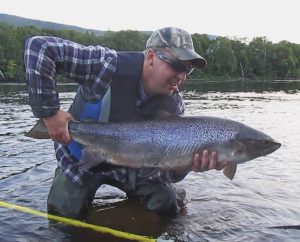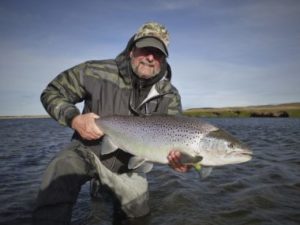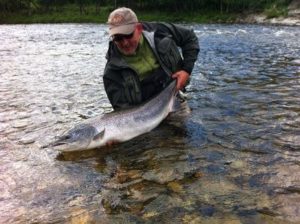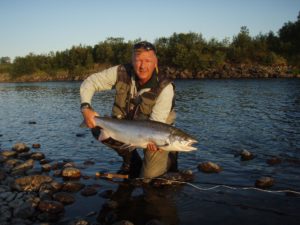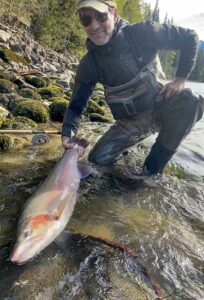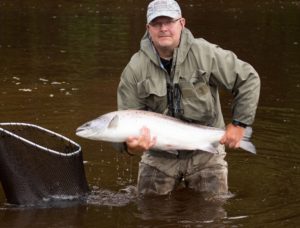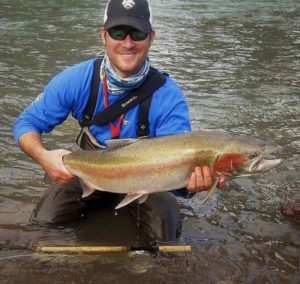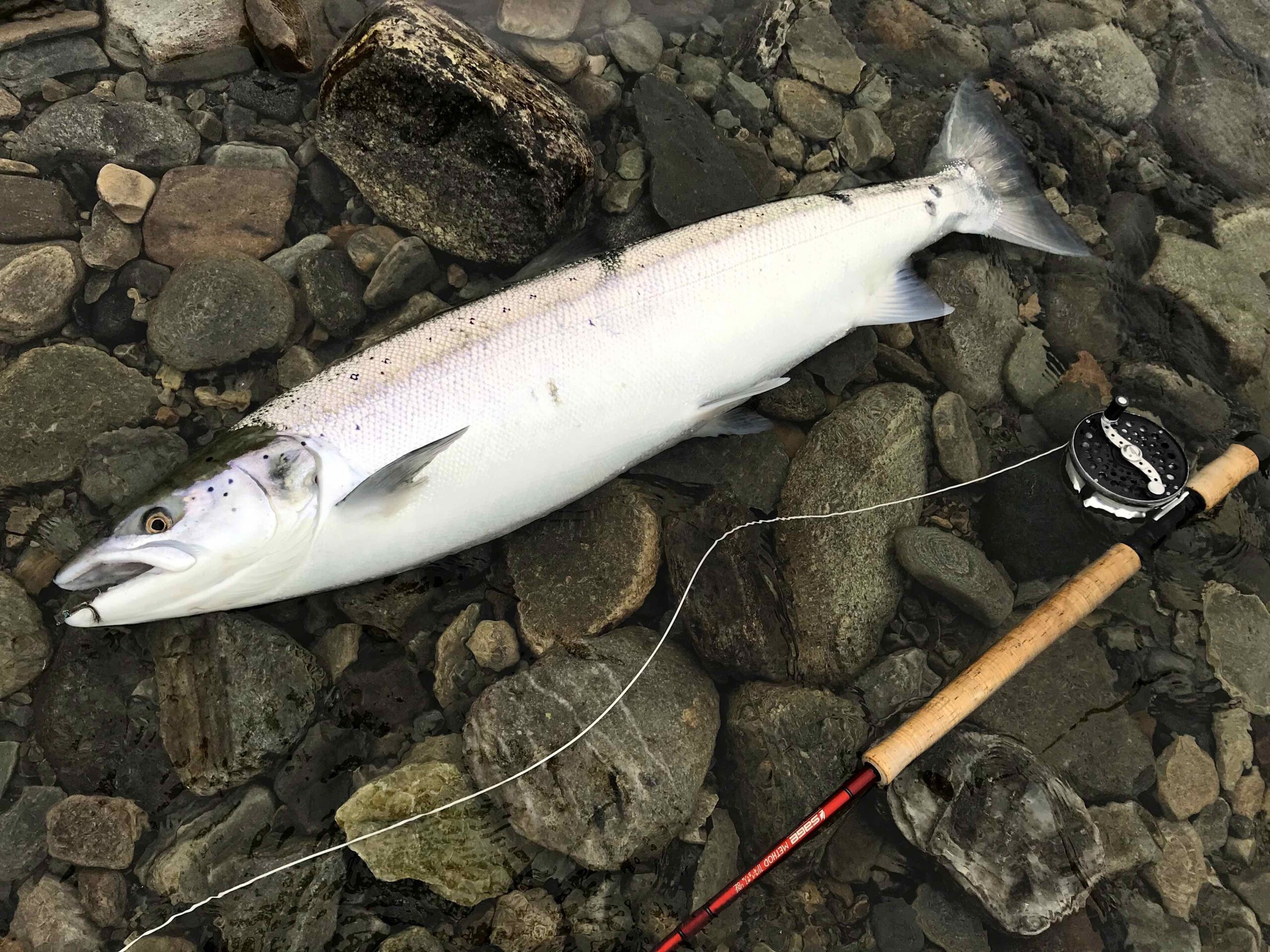
Riffling Hitch is a technique that is entwined in the world of dry fly fishing and, for that matter, also wake-fly fishing.
We want to separate it from both fishing forms and give it status as a unique sport.
Riffling Hitch is a form of fly-fishing centred around the fly’s movement on the surface. Often, very little commotion is needed to get full attention from the fish it originally was designed to catch: the Atlantic Salmon.
For the angler pursuing Atlantic salmon, the Riffling Hitch technique would probably best describe a quiet sport with lightly dressed flies that make a diminutive wake on the surface. Overdo the wake or commotion feature, which may scare the fish more than it tempts them.
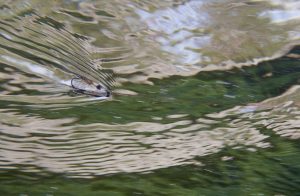
Riffling Hitch: Not dry fly nor wake-fly
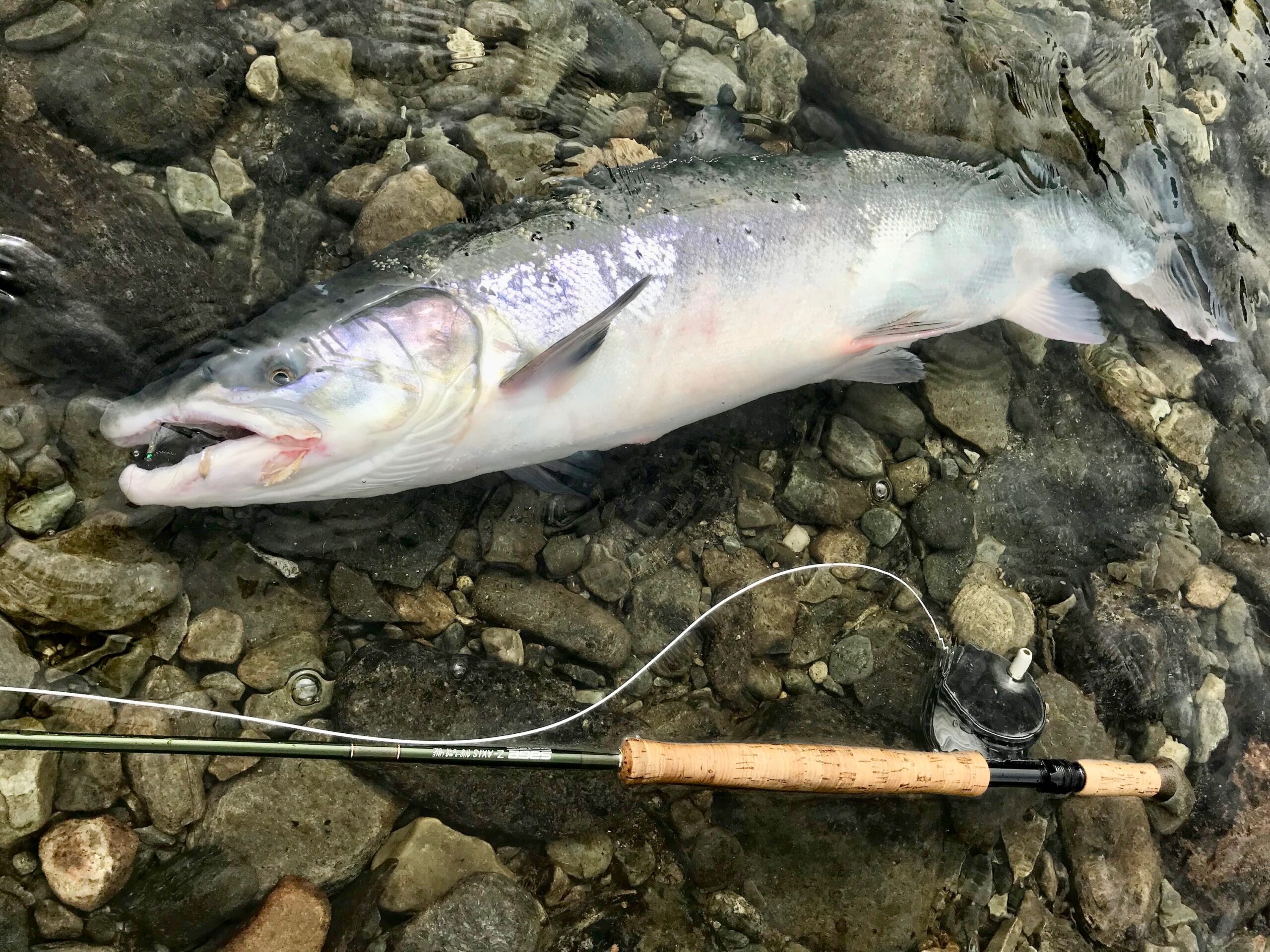
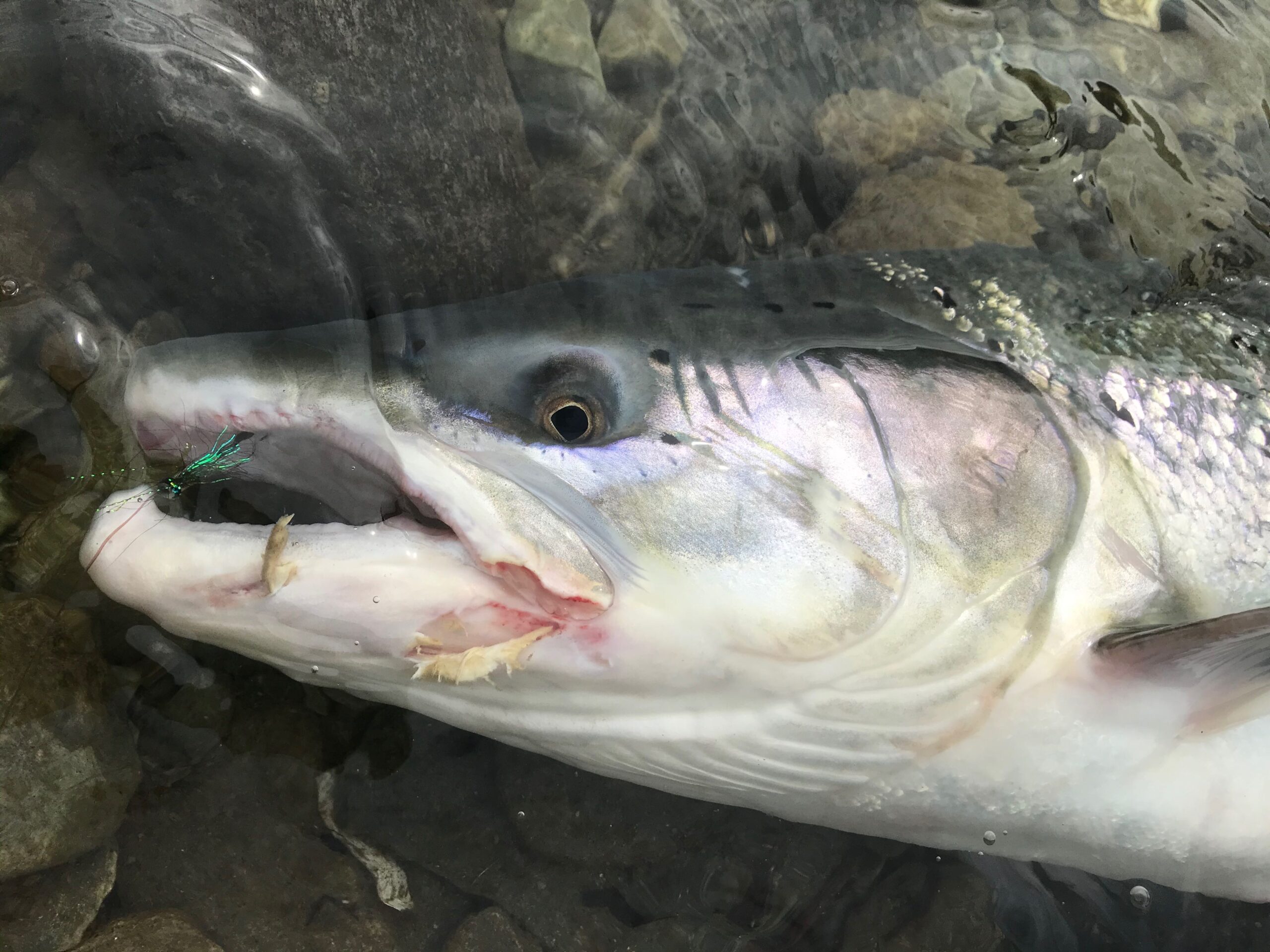
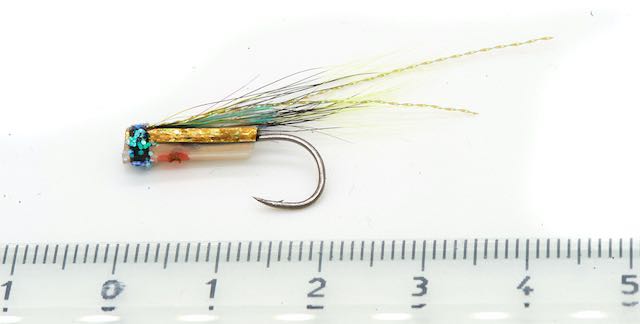
The Hitchman Fly ….probably one of the best riffling hitch flies you can use… Combination of see-through features… strong impression shimmering material combined with hairs from squirrel tail makes this tiny fly perfect for the job
What does the Riffling Hitch fly represent ?
An adult salmon grabbing a drifting insect in the surface or a small nymph-like wet fly below the surface is a part of the salmon life that easily could be explained with the experience it has had as parr in the river – Experiences that is part of a mutual genetic memory that Atlantic salmon has built on for 100 million years.
But what about the Riffling Hitch fly – what does this odd fly represent?
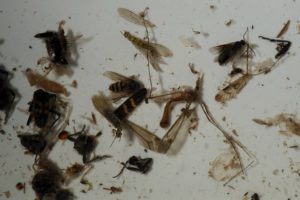
Left: Partly dissolved land and water insects – taken from the stomach of an Atlantic salmon in Northern Norway – Some salmon do eat during their stay in the river! …and for some reason, particularly those inhabiting the rivers in the far North of Norway – Something biologist Mr M Johanesen from the University of Tromsø, Norway has made a study on Read more
Caddisfly is a historic snack.
The Caddisfly is an insect of importance to the juvenile salmon and trout – it will periodically frequent the river systems and trail forth and back on the water surface, laying eggs – doing so, they will make a fine V-wake behind them. The caddisfly also leaves tracks on the surface when they try to leave the water to become fully developed insects. Even though we can’t be conclusive about what the riffling hitch flies represent – we know that caddisfly patterns like our Monster Tube Caddis and small Riffling Hitch flies are very efficient. When caddisfly insects are abundant at the river – in times of caddisfly hatches, adult salmon will also be more eager to rise to other floating fly patterns – one could say that the abundance of insects spurs a greater awareness in adult salmon entering the river.
It would be naïve to accredit the success of particular flies or fishing methods like riffling hitch to insect life as we see it today – Hunting skills and levels of curiosity with various species of fish could very well have been formed 10´s of millions of years ago when rivers and insect life might have looked different from now.
Photo: A small caddisfly locked in time and space in this piece of amber from the Eocene epoch, lasting from about 56 to 34 million years ago – The caddisfly insect is found fossilized in rock dating even further back – to The Triassic about 250 to 200 million years ago – It could be neat to believe that the success with the Riffling Hitch techniques was linked with the life and behaviour of the caddisfly.
Adult caddisfly fluttering across the river surface – And a caddisfly pupa that just has left the casing trying to get to safety on dry land. Dangerous moments in the life of the Caddis – and maybe it is this particular behaviour of the caddisfly insect that makes the riffling hitch technique so efficient – the insect trying to leave the water
Shimmering material on hitch flies attracts fresh running salmon
No doubt, shimmering and twinkling material has a great effect on Atlantic salmon. This effect is also very prominent with riffling hitch flies, something we have seen with various flies we have used over the years. The clear tubing and iridescent material make fresh running salmon hit the fly. It could be that the small hitch flies resemble small fleeing baitfish f.o sand eels or small juvenile herrings like these two found in the stomach of a freshly caught salmon. See our separate page on what salmon eat in the sea.
Read more about our thoughts and ideas on iridescent and shimmering material in flies.
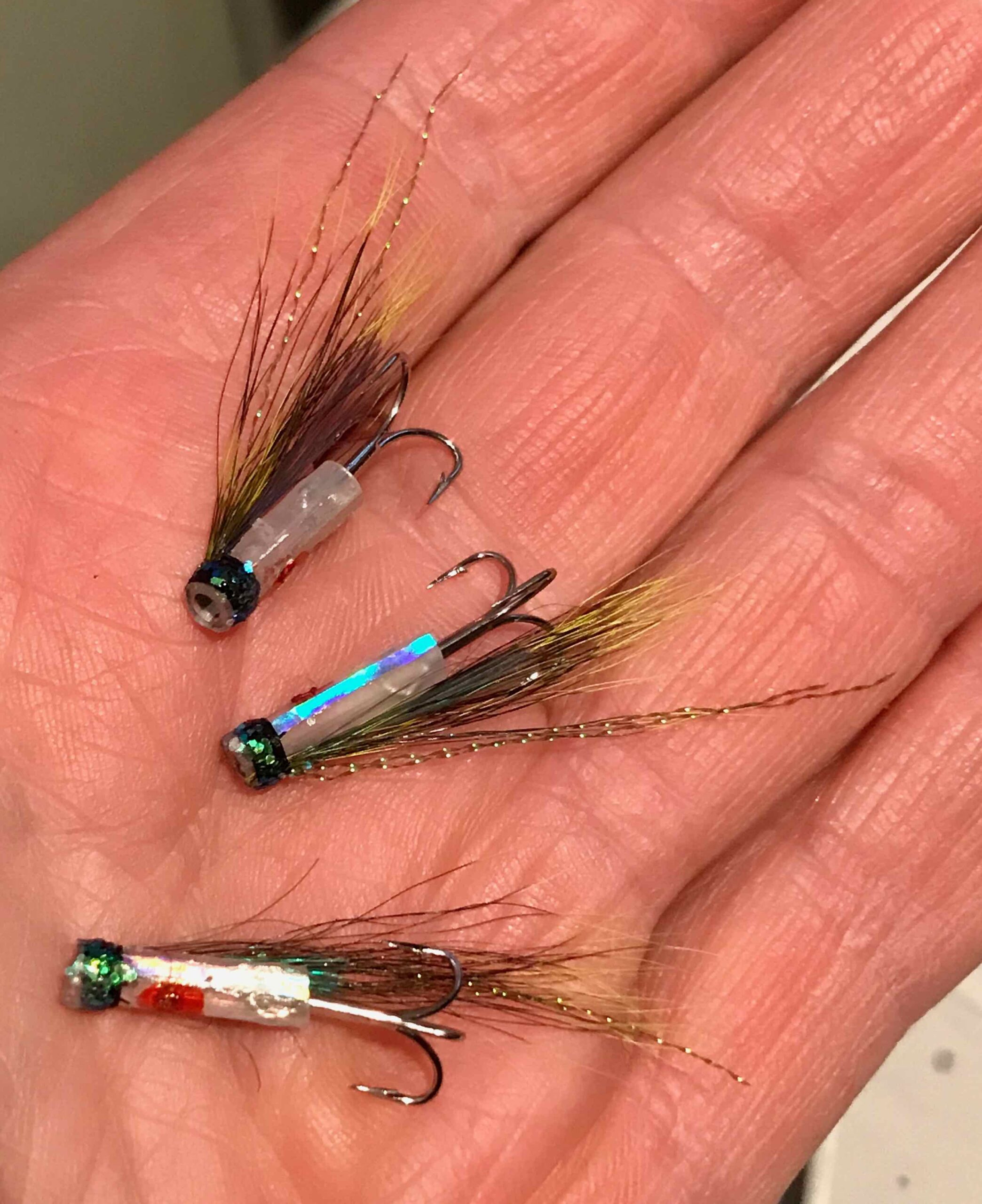
Tiny fleeing baitfish - is that what the hitch fly resembles?
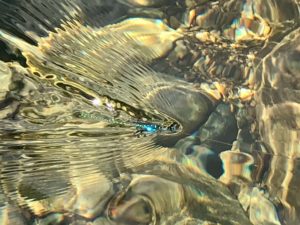
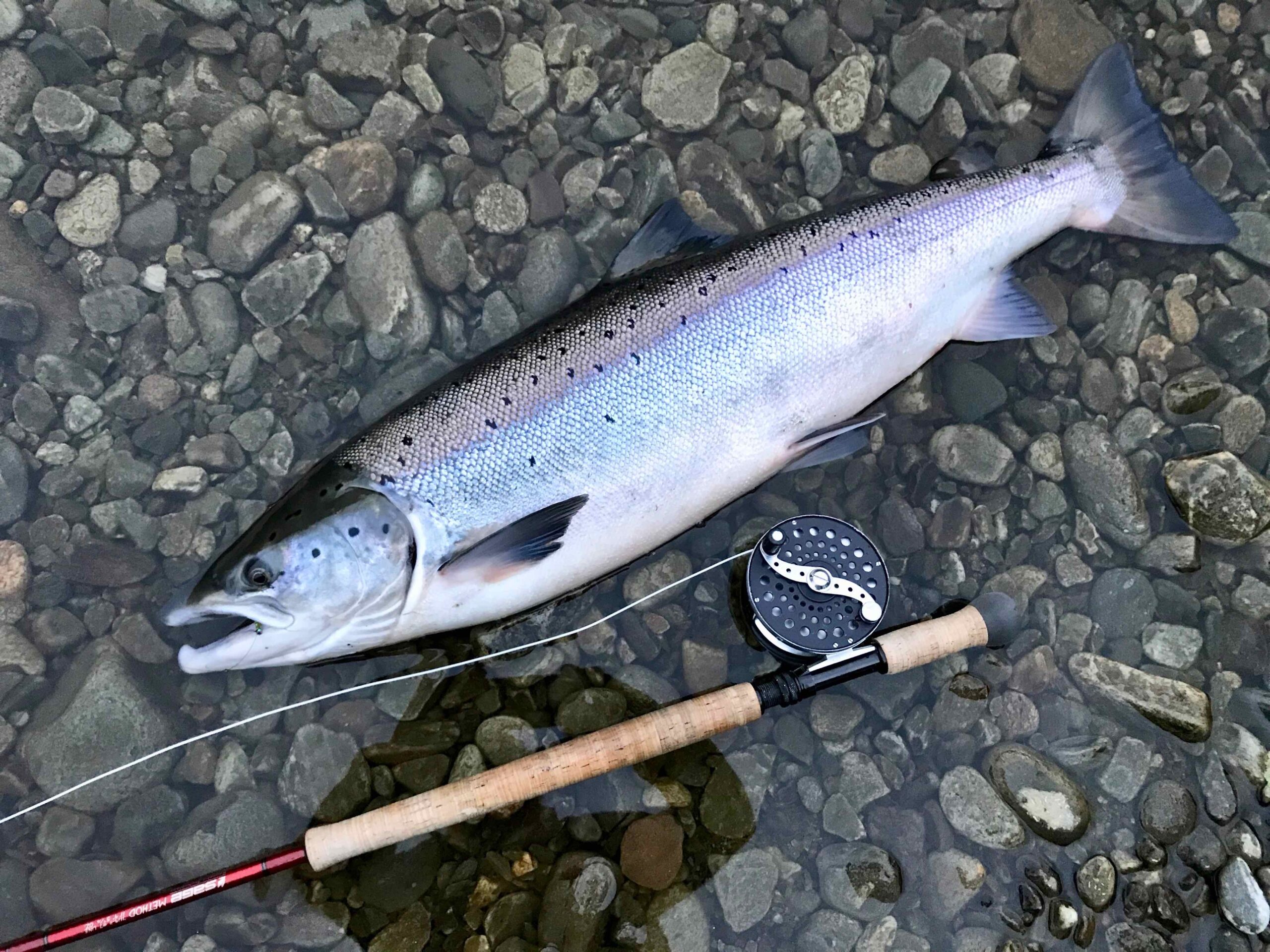
Fresh from the sea …87 cm (34 1/4 inch) This Atlantic Salmon…did not hesitate one second when it took the tiny Hitchman riffling hitch fly (This series of iridescent tube hitch flies will be available in the Fishmadman shop from 2020)
During dusk, the fish had moved out of the main stream into 20 inches of slow water and the fly had to be worked (fished with added speed) to gain the needed hitch effect.
Hitching in fishing history
Riffling Hitch as a fishing technique arose during almost a century of fly fishing traditions. Allegedly the method was developed as a coincidence by Newfoundland anglers who at the beginning of the 20th century, would have recycled damaged gut-eye flies discarded by English visitors …
Flies were recycled by tying them directly to the leaders using a series of hitches… That would have made the flies trail on the surface – creating that all-important V-shaped wake.
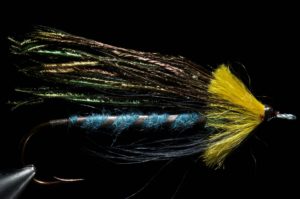
Flies were recycled by tying them directly to the leaders using a series of hitches… Evidently, that would have made the flies trail in the surface
The 1940's
During the 1940s Lee Wulff saw local salmon anglers at the Portland Creek in Newfoundland using the Riffling Hitch technique or riveling hitch as it also is called by the Portland Creekers. As an outdoor journalist, he popularized the Riffling Hitch sport. Still today it is a favoured sport on many Canadian salmon rivers and accounts for thousands of fish being caught yearly.
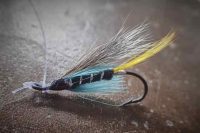
Fly tied to the tippet the traditional Portland way – Here done on one of our special Riffling Hitch Blue Charm flies – Fly is attached with a normal grinner knot…then a double hitch is tied to the head of the fly…When tying flies for riffling hitch fishing, remember to make enough room in front of the head of the fly to make the double hitch.
Lee Wulff Hitch Specials
This box set of 4 single hook flies is a true example of Lee´s ingenuity and a deep interest in riffling hitch fishing. This box-set was initially one of two available sets of experimental flies that Lee Wulff designed with a moulded body of nylon – a form of body design he also incorporated in his famed Surface Stonefly patterns.
Hitch flies the European way
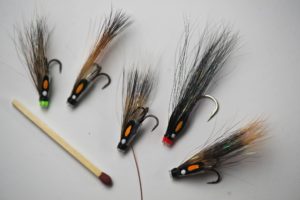
Read more about Riffling Hitch Know How.
Right: A batch of Fishmadman V-FLY a super Riffling Hitch fly
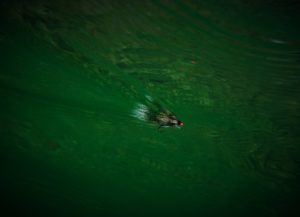 Here: Small Riffling Hitch V-FLY ™ seen from the salmon’s point of view
Here: Small Riffling Hitch V-FLY ™ seen from the salmon’s point of view
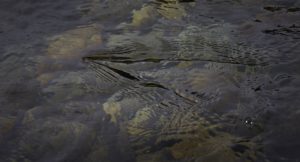 Here: riffling hitch fly: how it makes a V on the surface
Here: riffling hitch fly: how it makes a V on the surface
1976 the earliest mentioning of riffling hitch flies tied on a tube
It is probably in an issue of the UK fishing magazine Trout & Salmon from May 1976 that the angling society learns about the very first riffling hitch fly tied on a tube.
It is probably in an issue of the UK fishing magazine Trout & Salmon from May 1976 that the angling society learns about the very first riffling hitch fly tied on a tube. The author Mr Geoffrey Hopton mentions how to add a hole to the side of the tube to make the tube go to the surface.
The Trout & Salmon story from 1976 does, sadly enough, not show any photos of the very early tube-hitch fly, but the text describes in detail how it is made, and a small b & w illustration shows the principal of the design. Please take the time to read this fine article on surface fishing for salmon…Find article here
Special thanks go out to long-time riffling hitch angler Mr Martin Stansfeld for helping us find this historic piece of data. Martin is also the proud owner of the Kinnaber beat on the North Esk River in Angus, Scotland. A great beat for fishing the riffling hitch fly
The Trout & Salmon story from 1976 does sadley enough not show any photos of the very earlie tube-hitch fly. Still, the text describes in detail how it is made, and a small b & w illustration shows the principle of the design.
1980´s Derek Knowles Yellow Dolly Fly - One of the first riffling hitch tube flies
Mr. Derek Knowles was one of the first anglers who deliberately used plastic tubing to tie hitch flies on – Derek Knowles both used his tiny tube flies – waking across the river… but also fished his flies at deaddrift
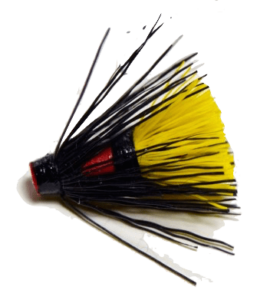
Right: The Yellow Dolly fly from the 1980s – From the hands Mr Knowles. one of the grandfathers of the riffling hitch tube flies European anglers use today.
1988 Mr. Crawford Little writes about the riffling hitch tube fly with a hole in the side

Crawford Little used the analogy between the technique of ottering a rowing boat in a river and the way one could build a tube fly that would pull to the surface
In the book Success with Salmon, Mr Crawford explains the hitch tube flies. Mr Crawford Little used the analogy between the technique of ottering a rowing boat in a river and the way one could build a tube fly that would pull to the surface. Ottering is best described as how one can force an object to cut away from you by pulling from the side of the object. Here it is trolling anglers using a so-called: Sideplaner or planer board to pull plugs and bait away from the boat.
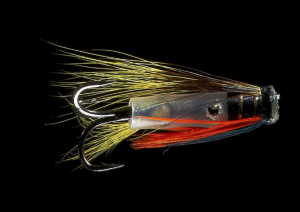
Hole in the side or in the belly of the riffling hitch tube fly?
We have a highly technical page explaining some of the aquadynamic aspects of building the ultimate hitch tube flies …Take me to this nerdy page.
Riffle hitch and waking fly - tricks and inspiration
Salmon flies are not equally good to use as Riffling Hitch flies ! There will be fly patterns that work better than other
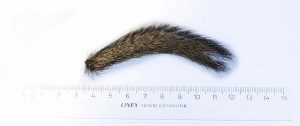
If you tie your Riffling Hitch patterns on a single or double hook, you should leave enough room in front of the hook so you will be able to fit in the hitch knots.
 Riffling Hitch in high & brown river
Riffling Hitch in high & brown river
Fishing a tiny fly on the surface during a rising river going muddy – might not be the first thing that springs to mind… never the less… Riffling Hitch can be an extremely efficient technique under such circumstances. Fish will travel close to the bank and surface… keep the fly on a short line – work yourself downstream with short casts and a rod held high. Be ready for a pounding heart when Mr. Salmon comes hammering out of the surface. In case you hook up on such a short line – strike immediately
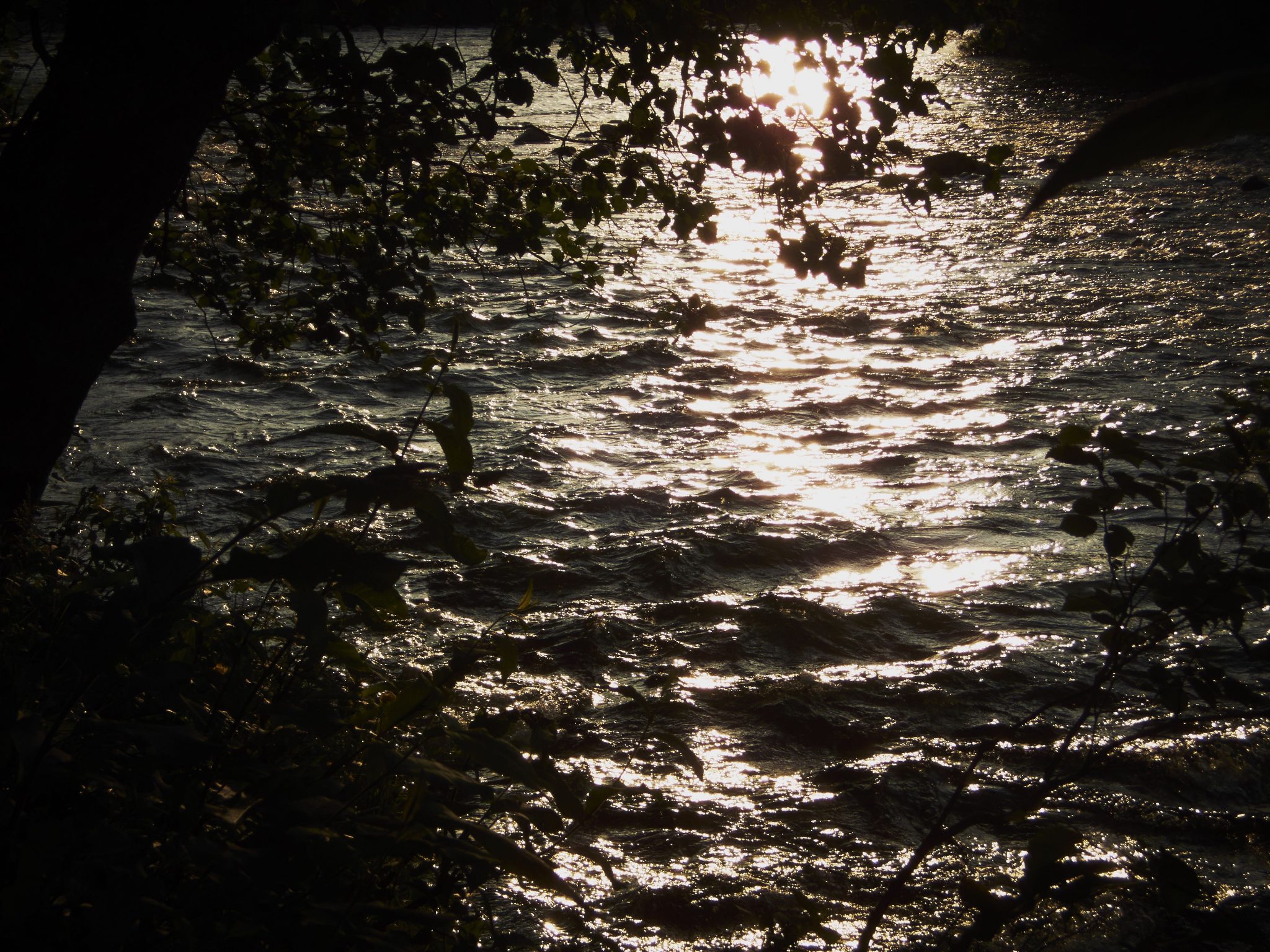
The Riffling hitch fly will fish well in many of the same places you usually would want to fish with a sub-fly – But a small hitched fly will also fish slow water, which could be otherwise very difficult to fish. Broken water like this small run is, in my book, the best kind of hitch water – the take can be almost invisible to cascades of water as the salmon hit the fly.
Shallow rivers is normally prime rivers for the riffling hitch technique – but the depth of water is not a bar for the riffling hitch technique and big fish will readily rise from the depth to intercept a micro riffling hitch fly
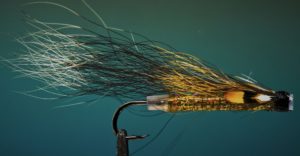
Hitchcraft

If you consider going to Island, remember to bring small riffling hitch tubes – dressed sparsely like this one – seen to the right.
To see two of the magnificent rivers Orri fished, go to Angling Club Strengur
If you consider going to Island, remember to bring small riffling hitch tubes – dressed sparsely like this one – seen to the right
– See this favoured riffling hitch tube fly in our shop
See the large selection of Riffling Hitch flies we have in our online-shop

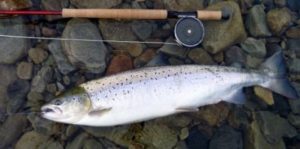
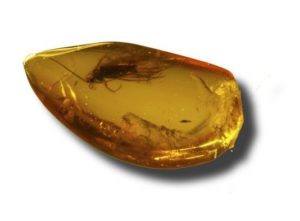 It would be naïve to accredit the success of particular flies or fishing methods like riffling hitch to insect life as we see it today – Hunting skills and levels of curiosity with various species of fish could very well have been formed 10´s of millions of years ago when rivers and insect life might have looked different from now.
It would be naïve to accredit the success of particular flies or fishing methods like riffling hitch to insect life as we see it today – Hunting skills and levels of curiosity with various species of fish could very well have been formed 10´s of millions of years ago when rivers and insect life might have looked different from now.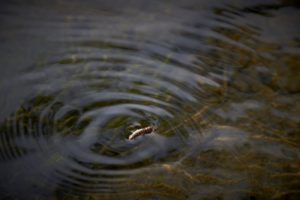
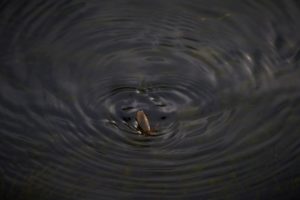
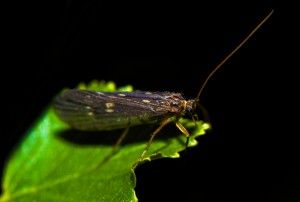 See and read more on the caddisfly insects
See and read more on the caddisfly insects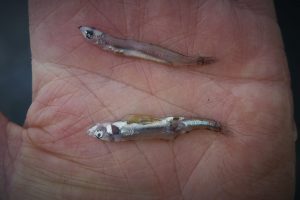
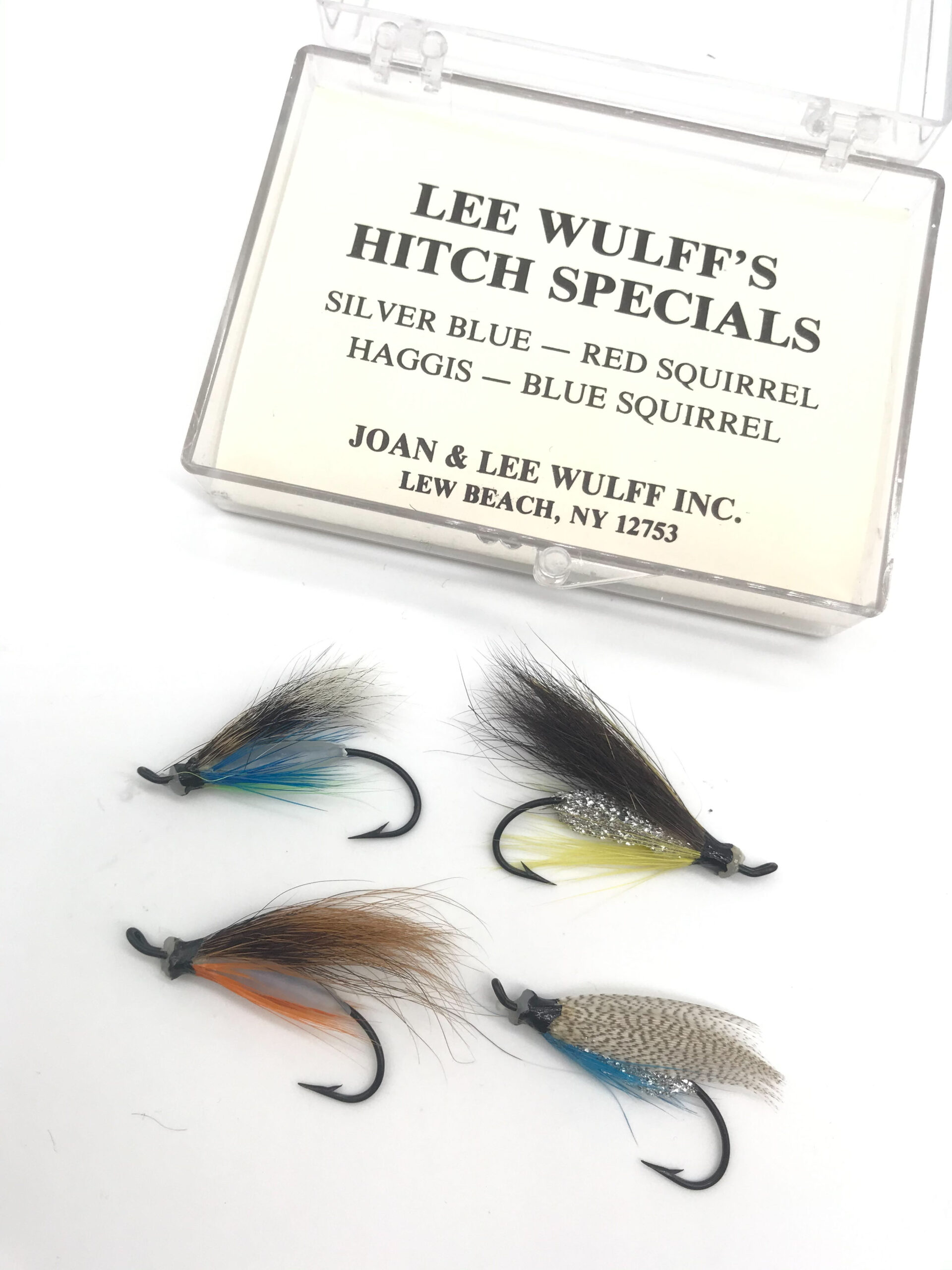
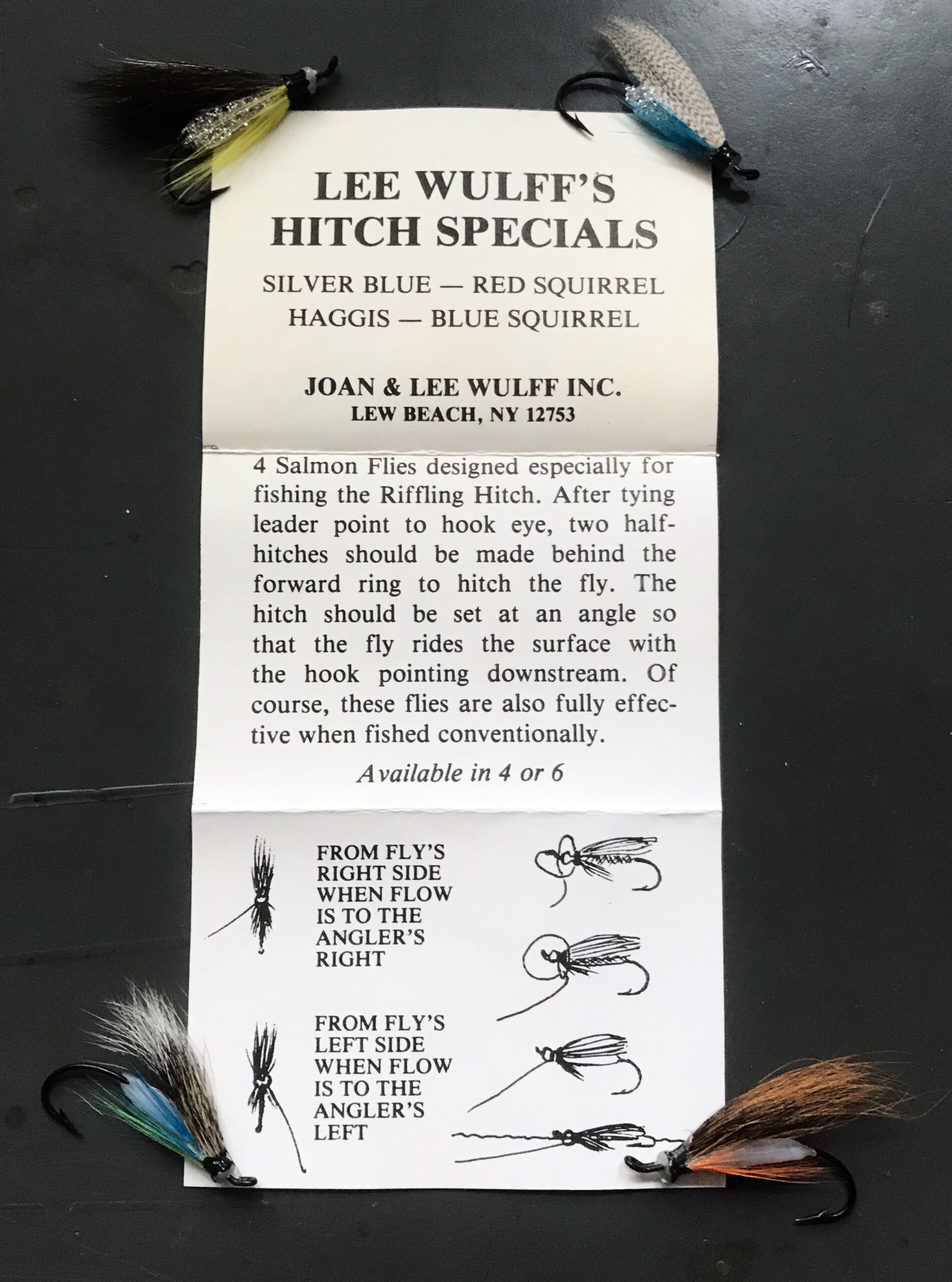
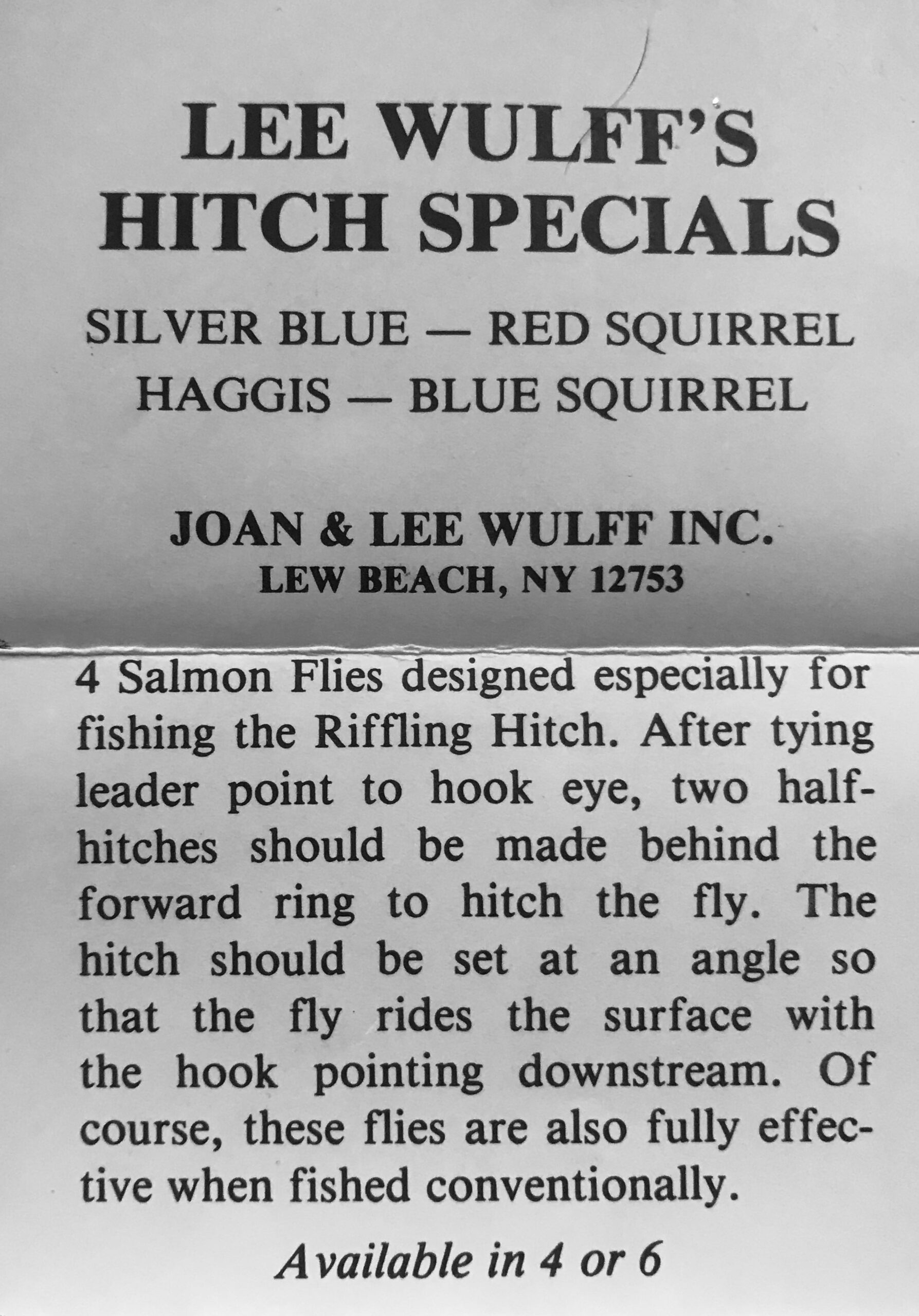
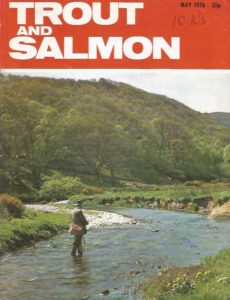
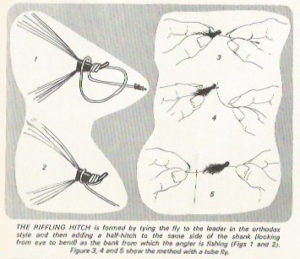
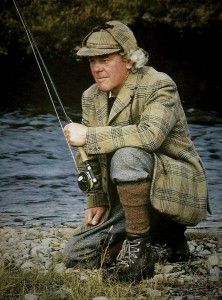
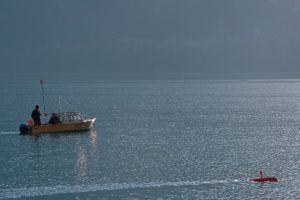
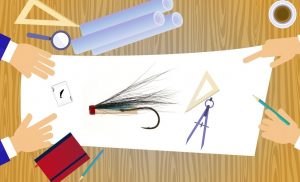
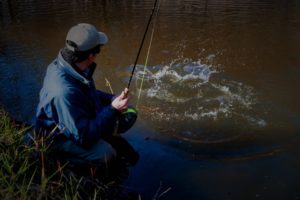 Riffling Hitch in high & brown river
Riffling Hitch in high & brown river